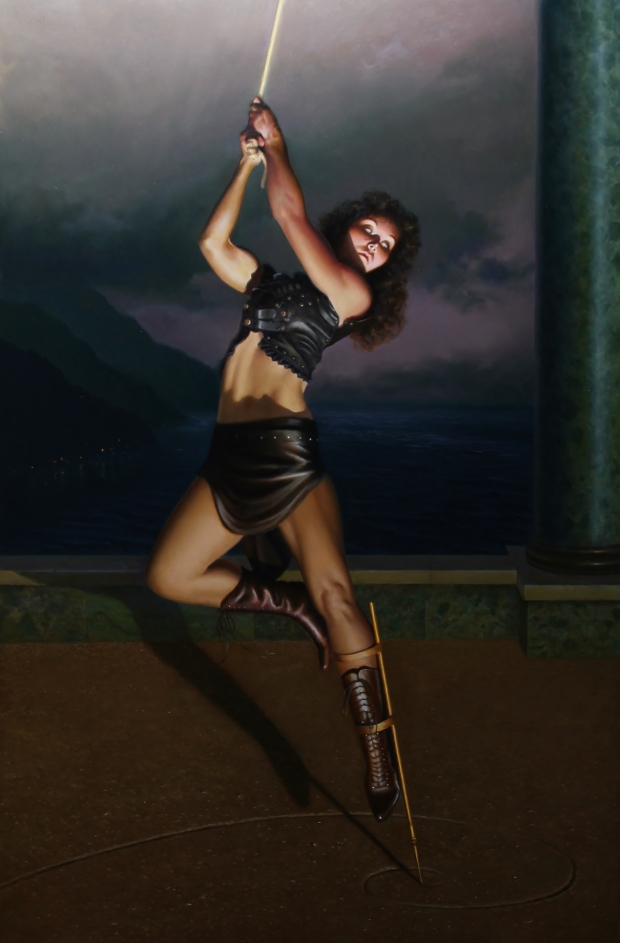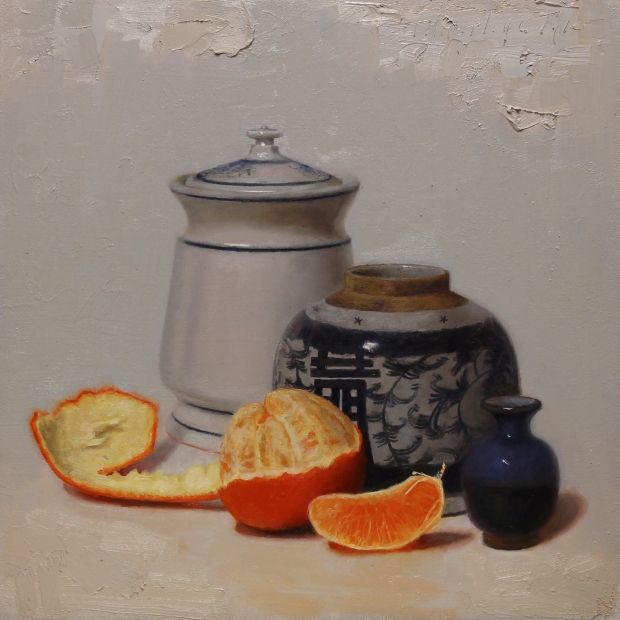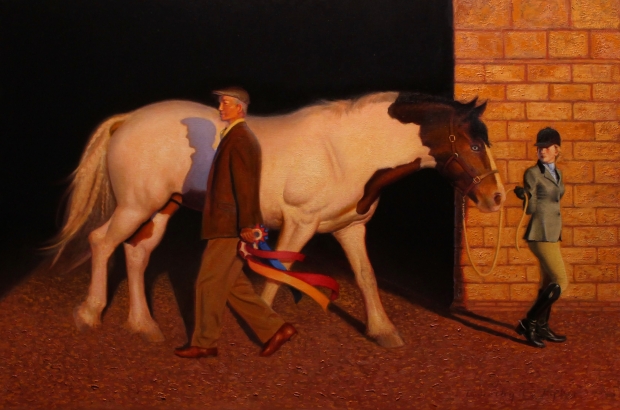5W – Timothy Tyler
For decades, local artist Timothy Tyler has worked with paint to add a certain contemporary edge to his still life works. However, as with any artist, exploration and experimentation is a must, so now, Tyler has gained much notoriety from patrons and peers for his use of the female figure. While this could generally go into a conversation about the male gaze, Tyler instead portrays his heroines in strong poses. We talked with the artist about his studio practice and interests, where he added that “apples don’t stand a chance next to the human figure,” and we couldn’t agree more.
NWA: Many of your works include representations of strong women, usually painted in a contemporary pose, but with a tinge of humor or an inside joke. How did you begin using the female form in your compositions?
TT: The female figures became part of my designs as I drifted away from exclusively painting smaller oils for galleries and began to enter international competitions. (Apples don’t stand a chance next to the human figure).
NWA: I know several of the paintings you’ve shown are of your daughter. How important to you is having a personal relationship to the model or person in the work?
TT: They can be catalyst, inspiration or an active participant. I often have a concept in my head and then will seek out a model to fit the requirements. However, once the work begins, new ideas will come up and sometimes this is inspired by the model. Occasionally, I will see a potential model and then compose a piece around them.
NWA: I’d like to discuss your “Shrine to Koons” piece. It’s skillfully made, but I feel like there might be a slight joke happening. Would you care to expand upon your reasoning for making it? You elude to other artists’ works in paintings such as “The Deconstructionist” with Warhol as well.
TT: Tom Wolfe’s “The Painted Word” is one book among hundreds which does a great job affirming what we unwashed masses have long known; “The King has no Clothes!” The excitement, publicity and market of high powerful non-representational art world are constructs. Artists today are actually held in awe because they don’t deign to dirty their hands by touching artwork. If it looks and feels like sewer pipe, painting it orange and attaching it to a slab of concrete doesn’t mean it isn’t sewer pipe. I hope my visual jibes are light hearted and mostly subtle.
NWA: How do you feel this area (Northwest Arkansas) has contributed to your studio practice? What do you find most interesting about its growth in terms of the art scene?
TT: Crystal Bridges. It has changed the whole region. NWA remains bucolic with hills, fields, and streams while undergoing an amazing, world class cultural upgrade. When first I moved here there was a handsome old barn and across the road was a spring-fed trout farm. Now there’s a burgeoning vast mall there. Yet we park on the adorable Bentonville square, drop into one of half a dozen unique restaurants for dinner then sachet down a tastefully done nature trail seven hundred yards and gaze at Sargents and Cassatts.
NWA: What are you currently working on in the studio?
TT: I’m beginning new ambitious figurative pieces I’ve wanted to paint but had set aside to paint for galleries. These continue the trompe l’oeil series with figures. I’m striving to participate in a dozen national exhibitions annually so must create continually.
NWA: When is your next exhibition?
TT: I’m presenting showing in the 100th Anniversary Exhibition of the Allied Artists of America at the Canton Museum of Art. I just concluded my last new painting for a one man show with Gallery Two 25 in Bentonville which will be open for the month of May.
NWA: What is the most challenging thing you’ve experience in terms of being a representational painter, yet being interested in contemporary commentary and/or images? How do you find a balance with the medium?
TT: You ask great questions! I believe visual arts are ever burdened with the inescapable need to communicate, to evoke some response from the person gazing upon it. I’ve rather enjoyed the advantage painting representationally has over those producers of vapid works which confound the poor audience at best or illicit no response at all (even worse).
NWA: Did you or do you have any artists whose work you enjoy or draw from? If you could pursue any medium other than painting, what would that be and why?
TT: John Singer Sargent, Anders Zorn, Nicolai Fechin, Joaquin Sorolla are on my short list. They were all virtuoso painters with amazing powers depicting living, breathing, people with rich color and majestic brushwork. I enjoy sculpting. I’ve cast several bronzes and will be staring new work soon.
NWA: I noticed that you’re teaching two workshops later this year. Do you find that teaching adds to your studio practice?
TT: I enjoy the enthusiastic student who wants to extract every bit of information possible from me. I find as I explain principles to the students, I must reexamine and defend my opinions and methods. The experience always leads to new ideas for future work. As a painter who teaches only occasionally, the workshops can be great escapes from the quiet and solitary studio. I like it.


